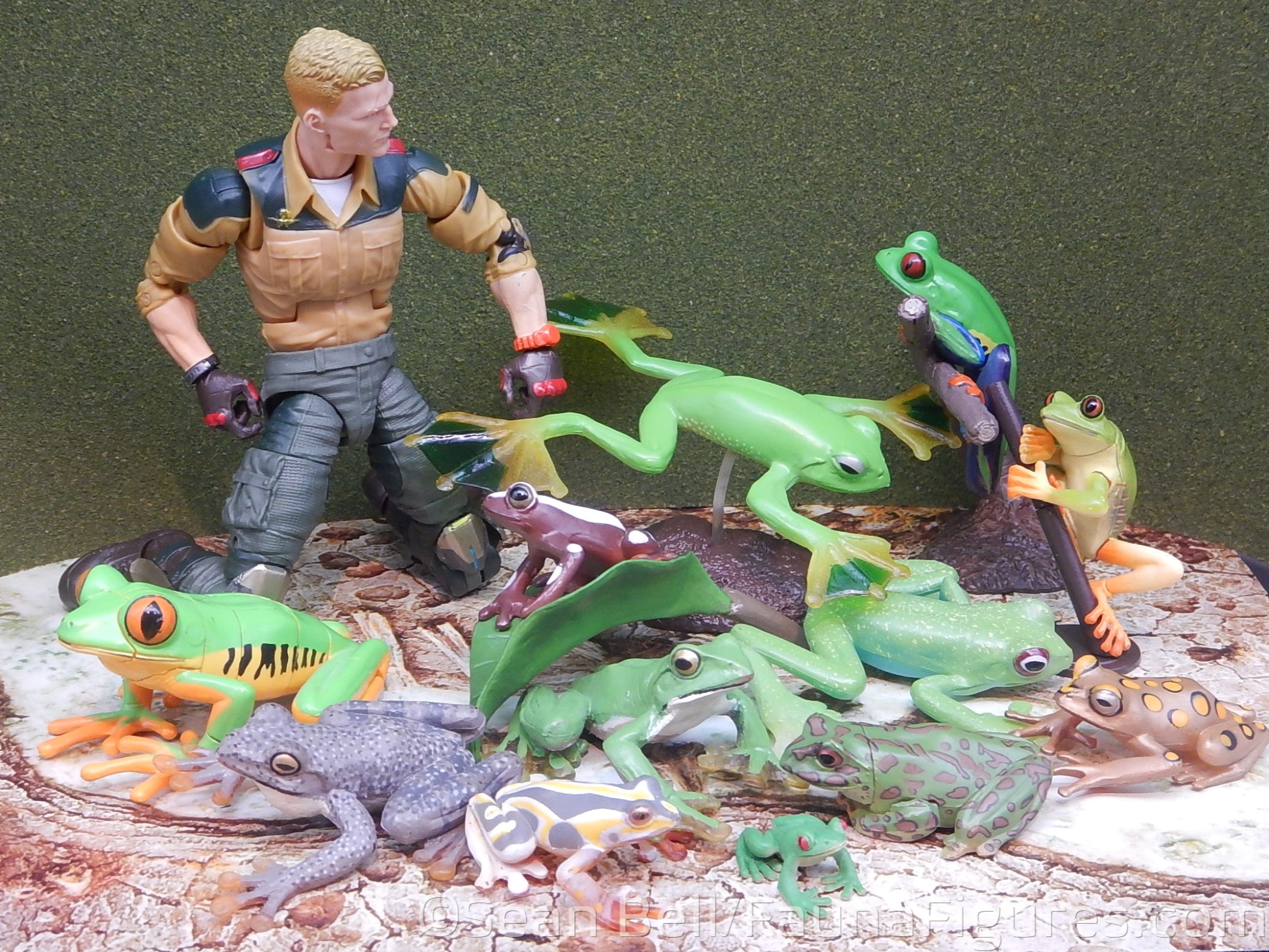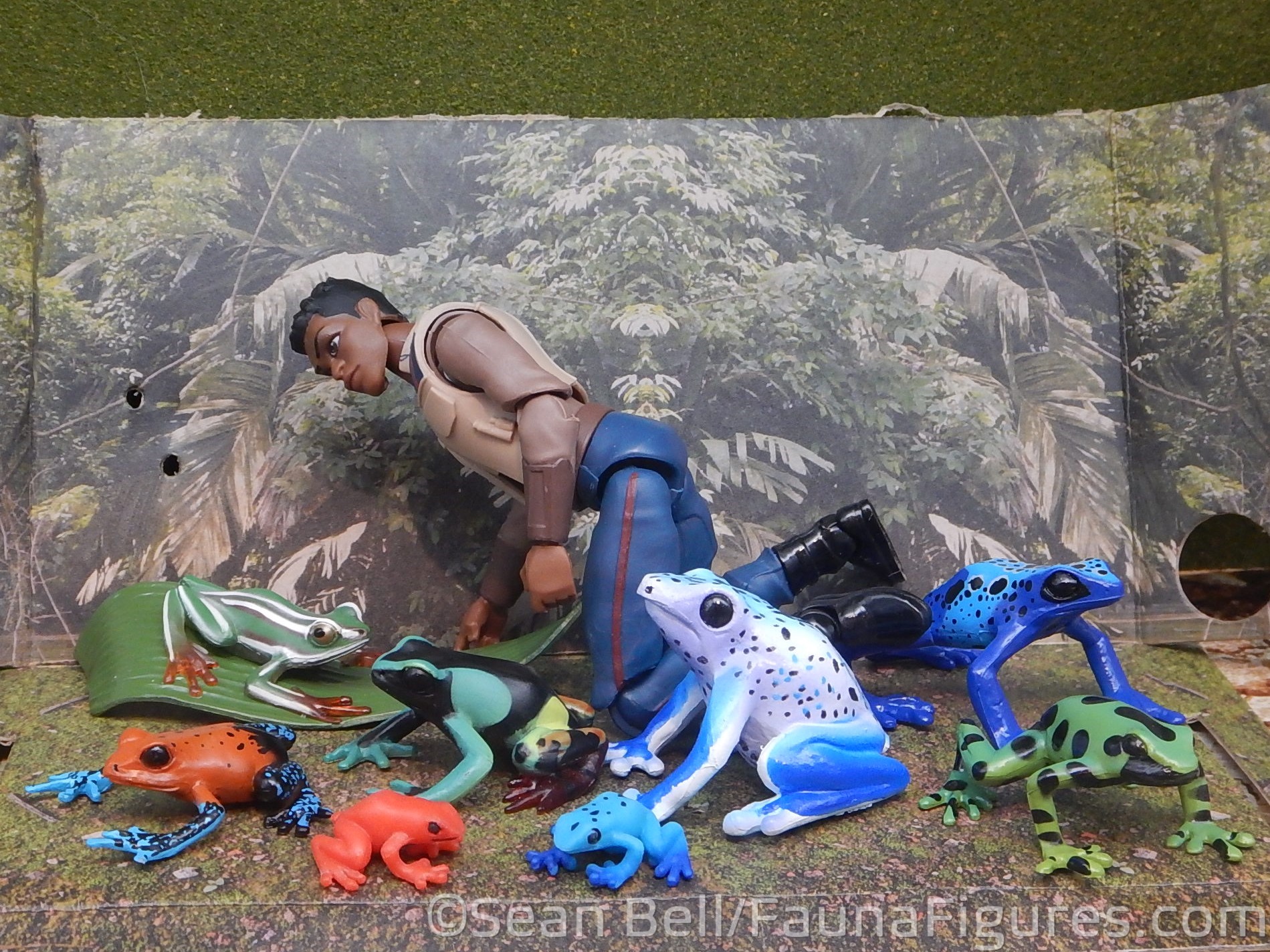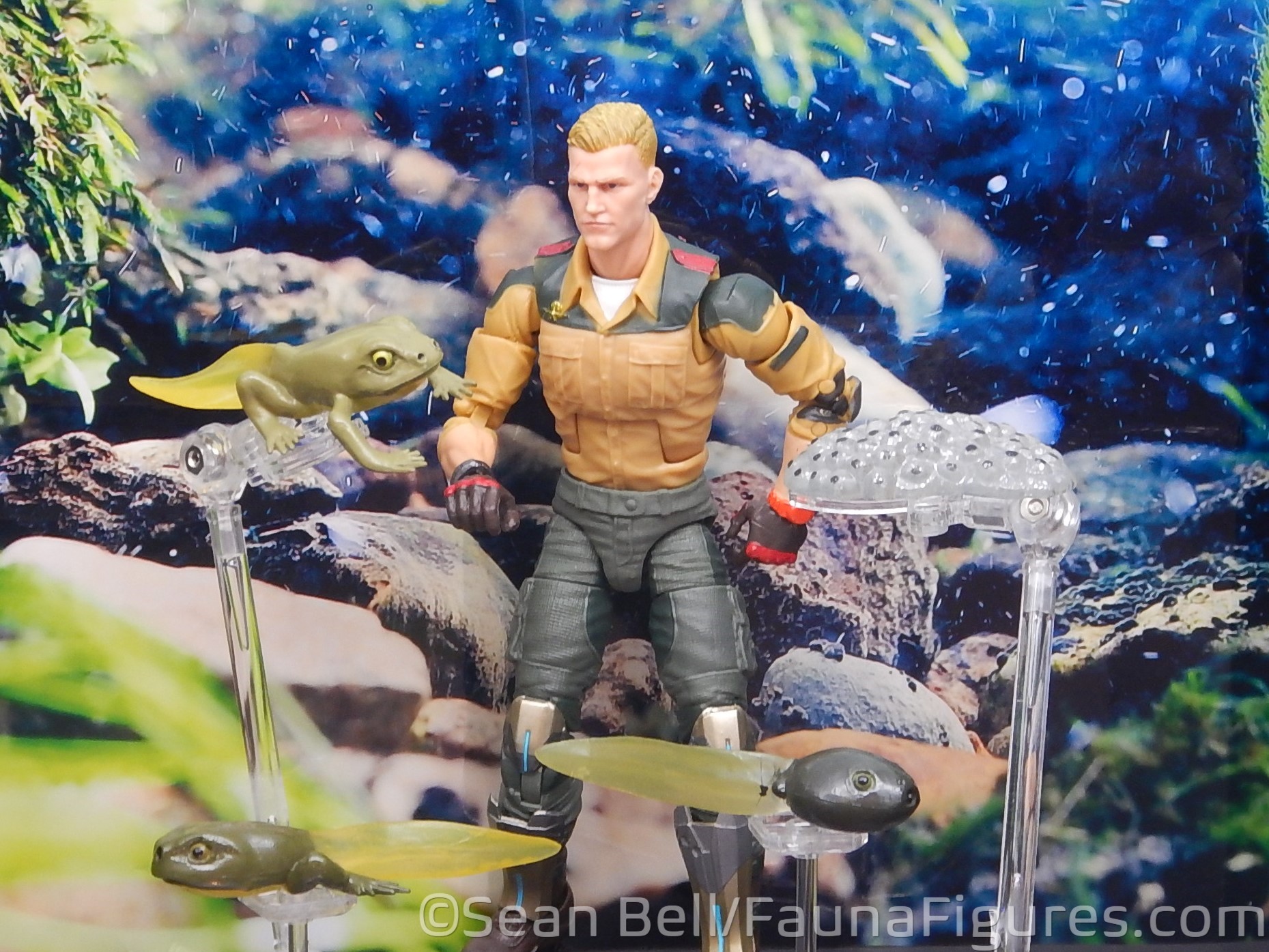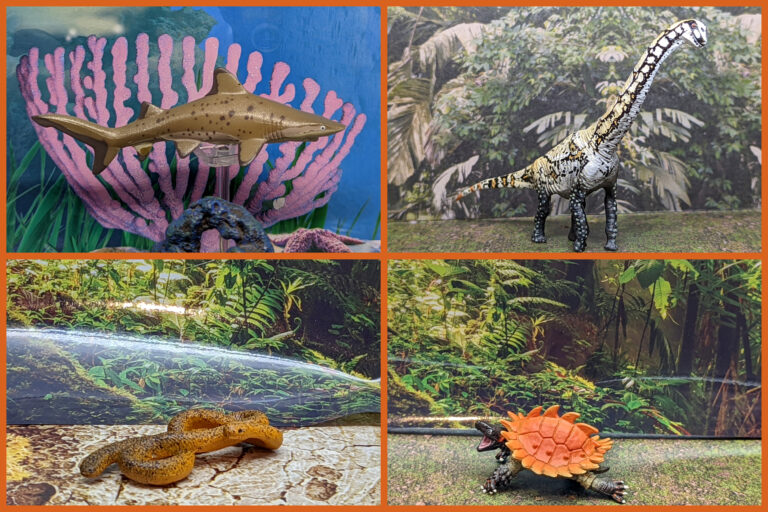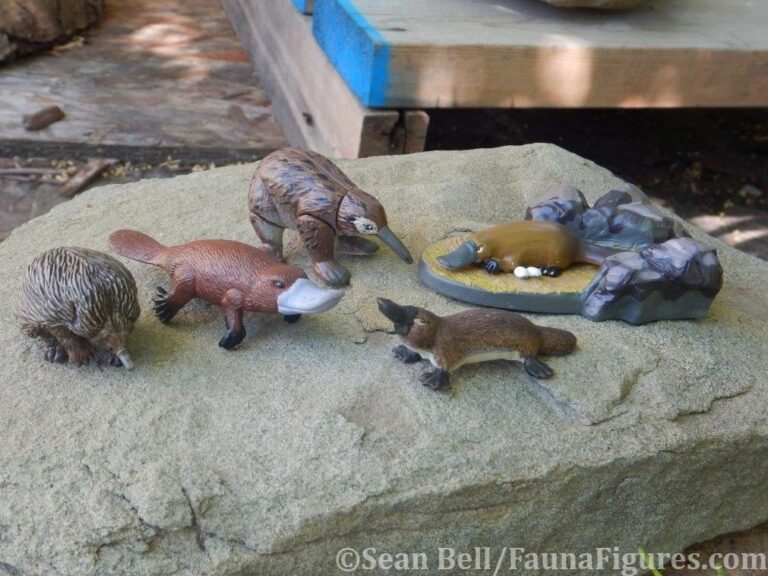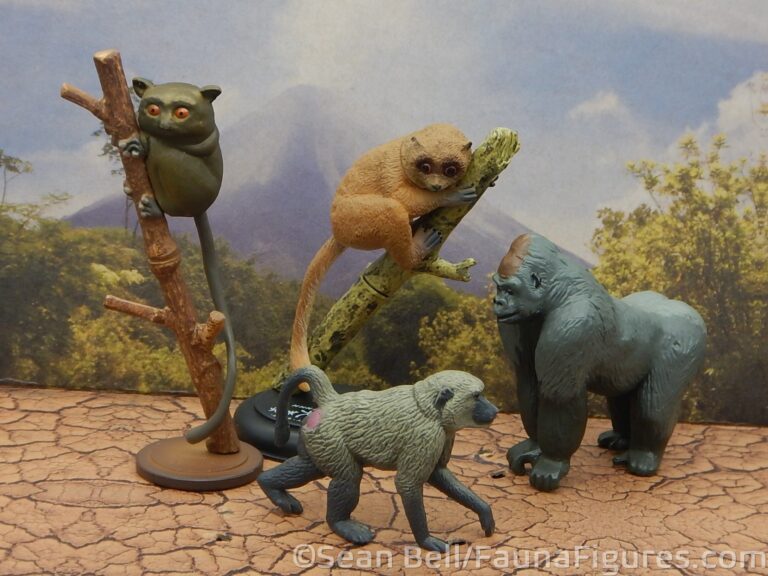We’re already doing another clade post? Yes! And it’s another one where there are a whole lot of figures, but I have just a small sampling. Really, it’s almost hard to not have at least a few figures from this clade. I am speaking about the Anura, better known as Frogs!
Frogs are of course a very recognizable group of animals, notable for their short, tailless bodies and legs modified for hopping. The Anura is the crown group of a lineage that includes frogs and proto-frogs, a group called Salienta. Salienta is one of two major clades within the modern amphibia clade Batrachia, the other being Salamanders or Caudata (one of the clades within the caudata, the Salamandroidea, was looked at here). The two groups are thought to have diverged in the late Permian or early Triassic (investigation continues). Salienta fossils are known from proto-frog taxa from the early Triassic of Poland and Madagascar; true Anura fossils may be known from the middle Jurassic of Argentina (although those may represent a sister-group. Fossil material tends to be fairly rare and delicate.
The Anura is of course very diverse within the general morphology of frogs and toads, and are divided into several families. These families are grouped into three broad groups, the Archaeobatrachia, with more ‘primitive’ frogs; the Mesobatrachia, an intermediate clade that features several fossorial frogs and one aquatic group; and the Neobatrachia, the most advanced group, which includes most of the frogs. Examples of all groups can be found as figures, although some are more common than others, pretty much in order of Archaeo-, Meso-, and Neobatrachia. I personally only have representatives of the latter two.
Due to their small and fragile skeletons, Anuran fossil material can be difficult to find, but the earliest true frogs known from the early Jurassic, and then spread out widely from then. Fossils have been found on every continent, even Antarctica, but are now restricted to…well, everywhere except Antarctica and some remote islands. They are more common in warmer, humid parts of the world; and can be limited by regional habitat and geography. Of course, recent events have seen marked disruptions, or even extinctions, of many populations due to disease and habitat destruction. Frogs are well known as ‘indicator species’ for the health of an ecosystem as they can be quite sensitive to those disruptions.
So, as mentioned, frogs are very familiar animals, and very common as figures, from every company imaginable, as well as random trinkets, plush and other toys. I have a very limited number, although I do enjoy the assortment that I have. Fossil species are pretty much not made though (there are a few Salientan figures, but they don’t fit in this clade). There isn’t much else to say–I can’t imagine anyone not knowing what a frog is, or how to get figures of one! It’s the individual species that can prove harder to find. And of course some brands can also be trickier to get than others too!



